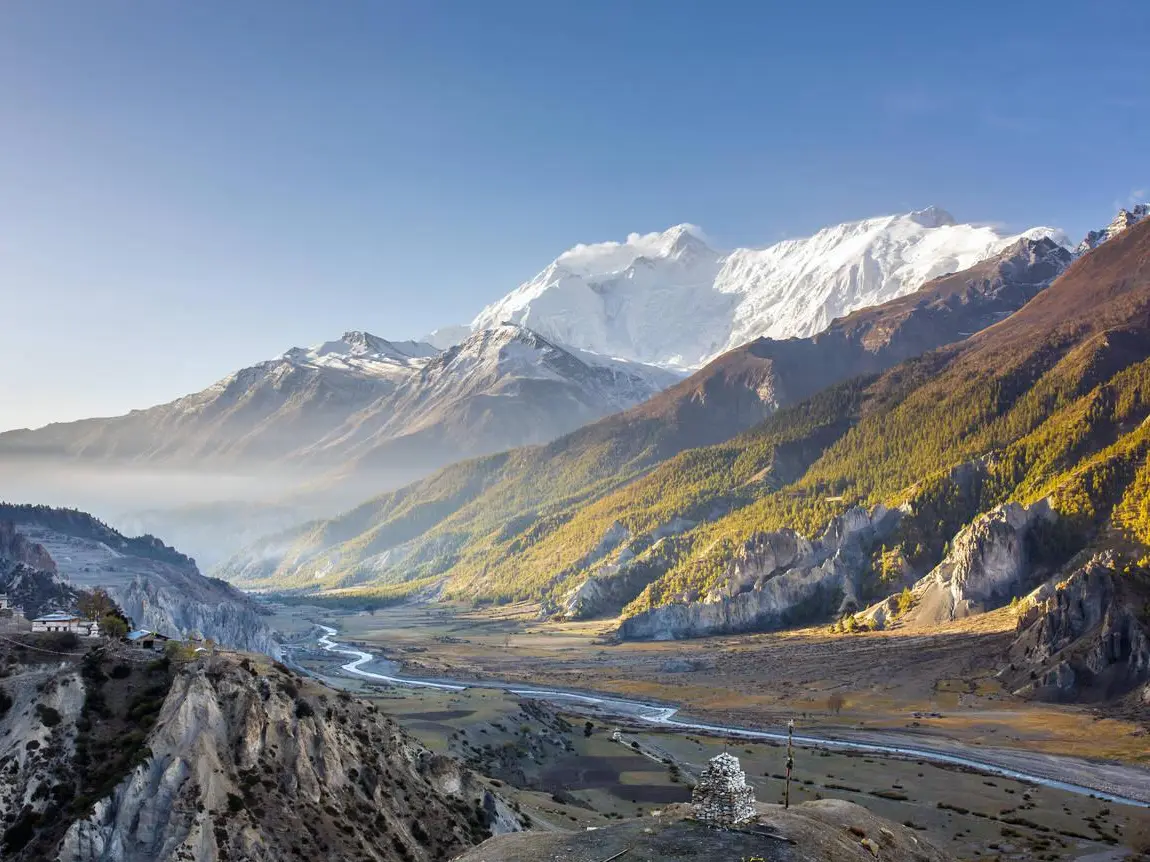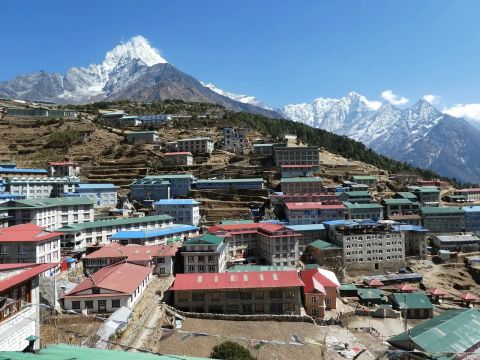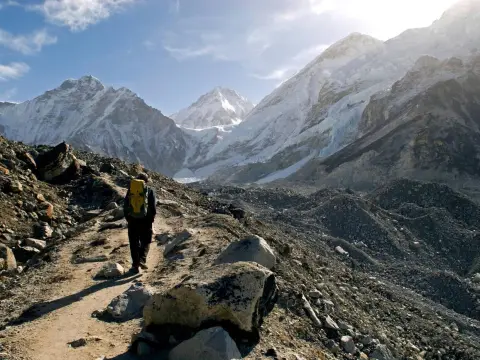Why You Should Stay in Namche Bazaar on Your Everest Base Camp Trek
When exploring on the iconic Everest Base Camp trek, choosing your stops carefully can greatly enhance your experience and increase your chances of su...

Trekking in Nepal offers one of the most breathtaking outdoor experiences in the world, attracting adventurers from all corners of the globe. From the towering peaks of the Himalayas to serene villages steeped in rich culture, Nepal’s trails provide a perfect blend of natural beauty and cultural immersion. This beginner’s guide by Trail Mania Trekking is designed to help first-time trekkers navigate these stunning routes with confidence, safety, and joy. Whether you dream of standing at the base of Everest or wandering through rhododendron forests, understanding the fundamentals of trekking in Nepal is the key to making your journey memorable.
At Trail Mania Trekking, we believe that preparation is the foundation of every successful trek. This guide will introduce you to essential trekking tips, including route choices, altitude acclimatization, and cultural etiquette. We also emphasize sustainable trekking practices to ensure that Nepal’s pristine landscapes and vibrant communities continue to thrive. By following this guide, beginners can look forward to an enriching adventure that goes beyond the physical challenge to include meaningful connections with nature and local people.
Nepal’s trekking routes are globally renowned not only for their awe-inspiring landscapes but also for the cultural richness and diversity they showcase. Trekking here is an adventure that challenges your body and elevates your spirit. The country is home to some of the highest mountains on Earth, including the legendary Mount Everest, making it a dream destination for trekkers seeking the thrill of high-altitude trekking and panoramic vistas. Beyond the mountains, the trails wind through charming villages where you can experience authentic Nepali hospitality, ancient monasteries, and unique customs that have remained unchanged for centuries.
For many, trekking in Nepal is more than just a physical journey—it is a transformative experience. The combination of breathtaking natural beauty, the simplicity of village life, and the warmth of local communities creates a powerful sense of connection and accomplishment. It offers trekkers a chance to unplug from the hustle of modern life and immerse themselves in a world where nature and tradition reign supreme. Whether you’re an adventure seeker, a nature lover, or a cultural enthusiast, trekking in Nepal promises an unforgettable adventure that will leave you inspired and rejuvenated.
Choosing the right time to trek is crucial for a safe and enjoyable experience in Nepal’s varied climate. The most popular trekking seasons are spring (March to May) and autumn (September to November). During these months, the weather is generally stable, with clear skies offering spectacular mountain views and moderate temperatures that make trekking comfortable. Spring is especially famous for blooming rhododendrons and lush greenery, while autumn boasts crisp air and vibrant cultural festivals.
Winter (December to February) and monsoon (June to August) seasons are less popular but still offer unique experiences for the adventurous. Winter trekking allows for solitude on the trails and snow-capped landscapes but requires careful preparation for cold temperatures and potential snowfall. The monsoon season brings heavy rain, making trails slippery and prone to landslides, but it also transforms the valleys into lush green paradises. With Trail Mania Trekking’s expert guidance, you can select the best season suited to your preferences and fitness level to make your trekking experience both safe and rewarding.
Proper gear and packing are fundamental to staying comfortable and safe on Nepal’s trails. The varied terrain and changing weather conditions require careful selection of clothing and equipment. Key items include sturdy trekking boots, layered clothing to adjust to temperature fluctuations, and a reliable waterproof jacket. Packing lightweight but durable gear helps reduce fatigue while ensuring you are prepared for unexpected weather changes. Don’t forget essentials like a good quality backpack, sleeping bag, and trekking poles to enhance stability on uneven paths.
In addition to clothing and footwear, other items like sun protection (sunglasses, sunscreen, and hats), hydration systems, and first aid kits are vital for maintaining health and comfort. Electronics such as power banks and headlamps improve convenience, especially on longer treks or early morning starts. Trail Mania Trekking provides a detailed packing checklist tailored for beginners to ensure nothing critical is overlooked. By packing smart and light, you can focus on the joy of trekking and minimize the distractions and discomforts that can arise from poor preparation.
Trekking in Nepal can be physically demanding, especially due to the high altitudes and rugged terrain. To make the most of your adventure and minimize the risk of injury or exhaustion, it’s important to prepare your body ahead of time. Start by building cardiovascular endurance through activities like brisk walking, jogging, cycling, or swimming. Aim to gradually increase the intensity and duration over several weeks or months. Strength training is equally important, focusing on your legs, core, and back muscles to support long hours of walking with a backpack. Exercises such as squats, lunges, and planks will help improve your stamina and stability on uneven trails.
In addition to physical conditioning, practicing hiking on varied terrain will acclimate your body to the types of challenges you’ll face in Nepal. If possible, try hiking with a loaded backpack to simulate actual trekking conditions. This will help you get used to the weight and improve your balance. Don’t forget to include rest days in your training schedule to avoid overexertion. At Trail Mania Trekking, we recommend starting your training at least two to three months before your trek, ensuring you arrive fit, confident, and ready to enjoy every step of your journey.
Nepal offers a diverse range of trekking routes catering to different fitness levels and experience. For beginners, it’s essential to pick trails that provide breathtaking views and cultural richness without overly taxing physical demands or extreme altitudes. Some of the most popular beginner-friendly treks include the Ghorepani Poon Hill Trek, known for its panoramic sunrise views over the Annapurna range, and the Everest View Trek, which offers stunning glimpses of the world’s highest peak without the technical challenges of Everest Base Camp. These routes are relatively short, well-established, and equipped with plenty of teahouses and amenities.
Another excellent option is the Langtang Valley Trek, which combines moderate trekking with beautiful landscapes and welcoming Tamang culture. These beginner-friendly routes allow newcomers to acclimatize to Nepal’s trekking lifestyle while building confidence and stamina. At Trail Mania Trekking, we help match trekkers with routes tailored to their fitness levels, time availability, and interests, ensuring a rewarding and enjoyable experience on Nepal’s trails.
One of the biggest challenges when trekking in Nepal is managing altitude sickness, which can affect anyone regardless of fitness level. Acclimatization is the process by which your body adjusts to the decreasing oxygen levels as you ascend higher. To prevent altitude sickness, it’s critical to ascend gradually, allowing your body time to adapt. The golden rule is to “climb high, sleep low” — hike to higher elevations during the day but return to a lower altitude to rest. This helps your body cope with the thinner air and reduces symptoms like headaches, nausea, and dizziness.
Hydration plays a vital role in acclimatization, so drink plenty of water and avoid alcohol and caffeine, which can dehydrate you. Listen carefully to your body and communicate any symptoms to your guides immediately. If symptoms worsen, descending to a lower altitude is the safest course of action. At Trail Mania Trekking, we build acclimatization days into our itineraries and provide expert guidance on how to recognize and respond to altitude sickness. Proper acclimatization not only ensures your safety but also allows you to fully enjoy the spectacular mountain scenery without discomfort.
Trekking in Nepal requires several permits and adherence to local regulations to protect both the environment and the trekking communities. The two most common permits are the TIMS (Trekkers’ Information Management System) card and the Annapurna Conservation Area Permit (ACAP) or Sagarmatha National Park Permit for treks in those respective regions. These permits help authorities monitor trekkers’ movements and contribute to conservation efforts. They are typically obtained before or at the start of the trek and are essential for legal trekking in Nepal.
Understanding permit requirements and paperwork can be confusing for first-time trekkers, especially when routes pass through multiple regions with different regulations. This is where the expertise of Trail Mania Trekking becomes invaluable. We assist you with all the necessary permits, paperwork, and fees, ensuring a hassle-free process. Additionally, respecting local rules such as waste management, trail etiquette, and cultural sensitivities is crucial for sustainable trekking. By following regulations, you contribute to preserving Nepal’s pristine environments and the well-being of local communities for future generations of trekkers.
Trekking in Nepal is not only a journey through stunning landscapes but also an opportunity to engage deeply with vibrant local cultures. The trails pass through diverse communities, including Sherpa, Gurung, Tamang, and Newar villages, each with unique traditions and customs. Showing respect to the local people and their ways of life enriches your trekking experience and fosters meaningful connections. Simple gestures such as greeting with a smile and the traditional “Namaste” (palms pressed together) go a long way in building goodwill.
At Trail Mania Trekking, we emphasize cultural sensitivity as part of our responsible trekking philosophy. This includes dressing modestly, asking permission before taking photographs, and respecting religious sites and festivals. Participating in local customs, like joining a traditional tea ceremony or visiting monasteries, allows trekkers to gain insight into Nepal’s rich heritage. By honoring these traditions, you not only enhance your journey but also contribute positively to the preservation of Nepal’s cultural identity and support the local communities you visit.
Proper nutrition and hydration are crucial when trekking in Nepal, where physical exertion and high altitudes demand steady energy and fluid intake. While on the trail, it’s best to eat balanced meals rich in carbohydrates, proteins, and healthy fats to maintain stamina. Popular trekking menus often include dal bhat (lentil soup with rice), noodles, soups, and fresh vegetables, which provide a good mix of nutrients. Carrying some energy bars, nuts, or dried fruits can be a handy source of quick fuel during long hiking days.
Hydration deserves special attention because altitude and physical activity increase water loss. Drinking at least 3 to 4 liters of water daily is recommended to avoid dehydration and help with acclimatization. Many lodges offer boiled or filtered water, but carrying a water purification method such as iodine tablets or a portable filter is wise, especially on less frequented routes. Trail Mania Trekking advises trekkers to avoid excessive alcohol and caffeine, which can dehydrate you. We also suggest bringing electrolyte supplements or oral rehydration salts to replenish minerals lost through sweat and maintain your energy and focus on the trail.
Safety is a top priority when trekking in Nepal’s remote and rugged environment. Preparing adequately can help you avoid common risks and respond effectively to emergencies. Always trek with a reputable guide from companies like Trail Mania Trekking, who know the trails, weather patterns, and emergency protocols well. Carry a first aid kit equipped with essentials such as bandages, antiseptics, altitude sickness medication, and pain relievers. Familiarize yourself with basic first aid and signs of altitude sickness before your trek.
Weather conditions can change rapidly in the mountains, so wearing proper layered clothing and having waterproof gear is crucial. Keep your valuables secure and inform your trekking company or family of your itinerary for added safety. Mobile phone coverage may be limited, so a satellite phone or local SIM with data can be a valuable communication tool in emergencies. In addition, be cautious on tricky paths, especially during wet or icy conditions, and use trekking poles for stability. At Trail Mania Trekking, our guides are trained in mountain safety and emergency response, and we ensure all trekkers have the support and information needed to enjoy a secure, worry-free adventure.

When exploring on the iconic Everest Base Camp trek, choosing your stops carefully can greatly enhance your experience and increase your chances of su...

Exploring on the Everest Base Camp (EBC) trek is a dream adventure for many trekkers worldwide. However, this challenging journey through the Himalaya...